Pros
Cons
Introduction
Product Overview
{{section_header}}{{section.name}}{{/section_header}}
The {{product.name}} is a stylish set of over-ears that carry the Adidas branding prominently displayed on the ear cups. It's just a guess, but we're thinking that these might be targeted towards those with an affinity for the 80's track-jacket look. Just a hunch.
Either way, these headphones certainly look pretty cool on HATS, and in all probability, you! Let's get a closer look, shall we?
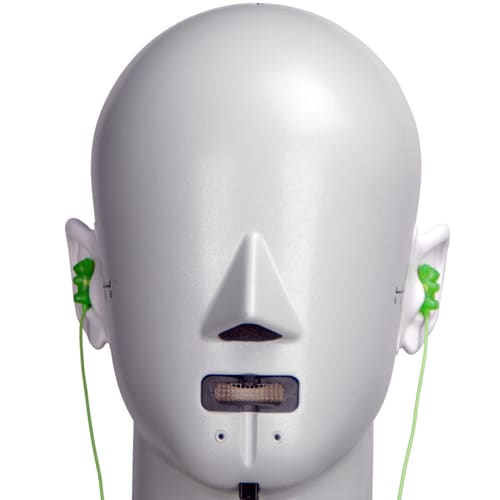
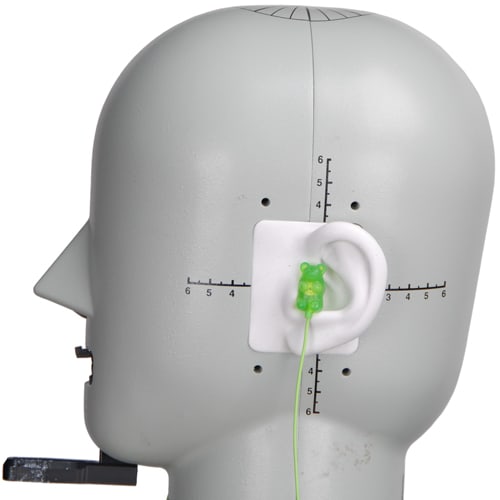
Speakers
{{section_header}}{{section.name}}{{/section_header}}
The speaker element is guarded by some felt and a minimal amount of plastic. Well, perhaps "guarded" is pushing it a bit, but the speaker isn't bare to the elements.
Sides
{{section_header}}{{section.name}}{{/section_header}}
Back
{{section_header}}{{section.name}}{{/section_header}}
Band
{{section_header}}{{section.name}}{{/section_header}}
The band is probably one of the most unique elements to the design of the {{product.name}}. Not only are the ear cups able to swivel, but the band itself splits open to create a wider cradle for your cranium. This could be useful for those who have problems with their headphones slipping down their heads.
Cable
{{section_header}}{{section.name}}{{/section_header}}
The cable of the {{product.model}} is robust enough, measuring in at 3.93 feet long and sporting a thick insulation over the wire itself.
The plug of the {{product.name}}s is ridiculously robust for a set of headphones, made of a thick rubber and very rigid. The outside of the plug is threaded, for a super-secret bonus we will discuss later.
There really isn't much in the way of cord guards, but the headphones themselves have an interesting guide system to handle the connections leading out of the ear cups.
Additional Features
{{section_header}}{{section.name}}{{/section_header}}
In the Box
{{section_header}}{{section.name}}{{/section_header}}
The {{product.name}}s come packaged in a fake Adidas shoebox with the headphones, extra ear cups, a plug adapter, Adidas-branded carrying pouch and some documentation.
Durability
{{section_header}}{{section.name}}{{/section_header}}
Considering just how much these headphones cost, it's a little frustrating that they're made of such a thin plastic that could be easy to break should they get knocked off a desk or sat on. We advocate taking special care of your headphones, but they should be able to withstand some wear and tear. While you can buy replacement parts for the {{product.model}}s, not all of the common repairs are easy ones, despite being heralded as user-replaceable components.
Additionally, for "DJ style headphones" they have thin wiring that isn't protected by the band all the way to the ear cup. If you wear glasses or sunglasses, take extra care that you don't accidentally loop them through the wiring on the {{product.model}}s while you wear them.
Aesthetics
{{section_header}}{{section.name}}{{/section_header}}
These headphones are certainly stylish, with a sporty feel and several branding labels with... interesting bragging points, like "Made in Ireland" on the band.
Frequency Response
{{section_header}}{{section.name}}{{/section_header}}
For most of the range of audible frequencies, the {{product.name}}'s actually have a fairly flat frequency response with only a strange dip (severe underemphasis) in the 6-8kHz range. Sounds in this range can get loud if a track isn't mixed properly, but what this dip in response means for you is a somewhat strange reduction in volume of cymbals, and high-frequency fricatives and some sibilants ("f" and "s" sounds, in particular).
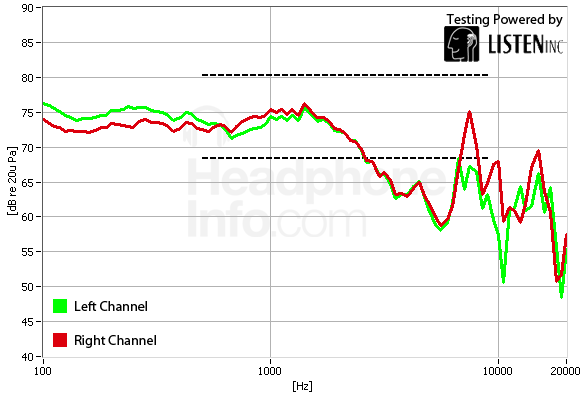
Click here for more information on our frequency response test.
Distortion
{{section_header}}{{section.name}}{{/section_header}}
Every time we get headphones in the office we get a faint feeling like something is about to go horribly wrong, and we can never put a finger on it until we run our audio tests. Thankfully though, this wasn't the case with the {{product.model}}s, but they do output around a 1% level of distortion in the low frequencies as well as an errant peak in the high to mid tones. These aren't reference headphones, but they're not too bad.
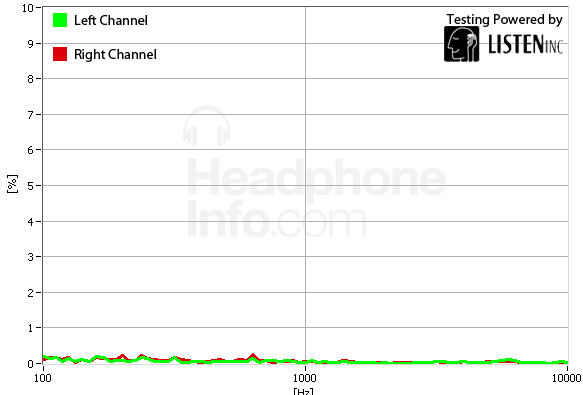
Click here for more information on our frequency response test.
Tracking
{{section_header}}{{section.name}}{{/section_header}}
The {{product.model}}s weren't perfect in their tracking, but really, you can't be expected to be able to detect a 2 dB shift in volume if you're listening to your music within the dB guidelines of ASHA (American Speech-language Hearing Association). You most likely won't notice any problems with your Sennheisers in this regard.
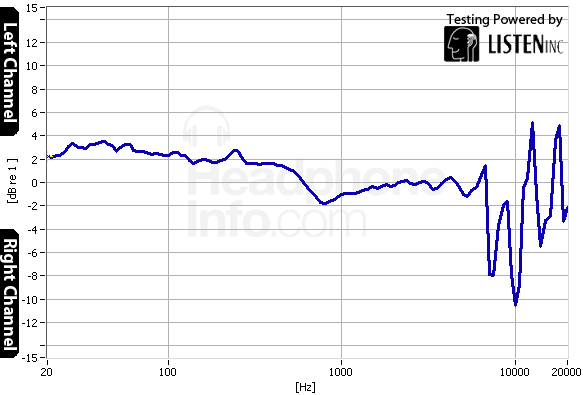
Click here for more information on our frequency response test.
Isolation
{{section_header}}{{section.name}}{{/section_header}}
Supra-aural (on-ear) headphones are typically bad at preventing outside noise from reaching your ear, so it doesn't really come as a big shock to us when we found that the {{product.model}}s too, do not prevent much sound from reaching your ear. They do block some higher-pitched sounds, but overall they just don't take you away from the outside world (forcing you to raise the volume to hear your music well, which is a very bad thing for your ears).
If you're using these outside, however, that may be a good thing, depending on how aware you keep yourself of your surroundings. Still, don't expect to be able to drown out much noise with these cans.
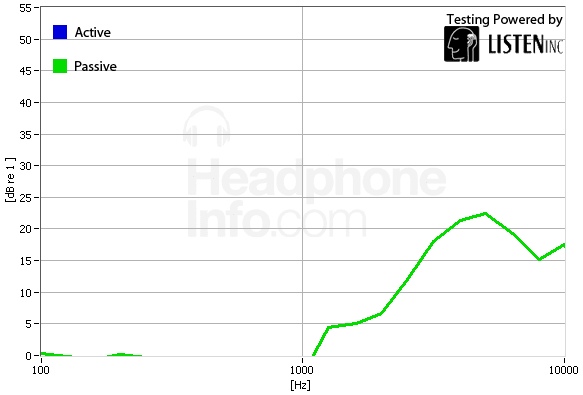
Click here for more information on our isolation test.
Leakage
{{section_header}}{{section.name}}{{/section_header}}
Even though the {{product.model}}s aren't good at blocking out sound, they are decent at corralling their own sound. If you're going to use these in a crowded area for long periods of time, you won't disturb others around you unless you really try to max out these cans (don't actually do this).
Click here for more information on our leakage test.
Maximum Usable Volume
{{section_header}}{{section.name}}{{/section_header}}
The {{product.model}}s have a maximum usable volume of 114dB, which should be more than enough for any listening. Beyond this point, the headphones will output over 3% distortion, which will be annoying to any human listening to it.
This section of the review always comes with the caveat that you really should not listen to headphones this loudly, as the threshold for permanent damage to your hearing is lower than you think (85-120dB). Do yourself a favor and educate yourself on Noise-Induced Hearing Loss (NIHL) with the link provided and how your ears work before you invest in a sweet set of cans so you can keep using your headphones for years to come.
Click here for more on our maximum usable volume test
Short-Term Use
{{section_header}}{{section.name}}{{/section_header}}
The {{product.model}}s are fairly comfortable headphones, but they do grip your head a little tightly. It isn't enough to cause any pain, but the fit can be a bit snug.
Keep in mind too, that comfort is largely subjective, as people come with differently-sized and shaped heads. What is comfortable for one may be painful for another, so like always, try before you buy if at all possible.

Extended Use
{{section_header}}{{section.name}}{{/section_header}}
Over time, the headphones didn't really didn't change much in terms of comfort, as you will always notice their presence, but they aren't uncomfortable.
Customizability
{{section_header}}{{section.name}}{{/section_header}}
The {{product.model}}s come with an extra set of ear pads, allowing you to switch up if one gets soaked with sweat, or if you just like your headphones with the white cups better than the blue ones.
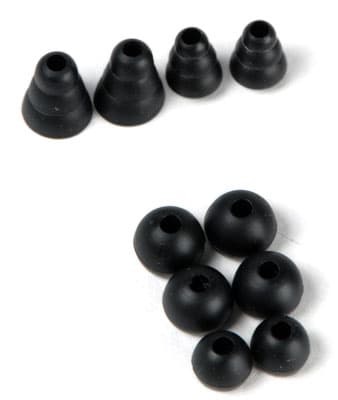
Cable Connectivity
{{section_header}}{{section.name}}{{/section_header}}
When you first open the shoebox, you'll notice that the {{product.model}}s appear to have a 1/4-inch plug adapter instead of a 1/8-inch one. In reality, it's a screw-on adapter that can be removed and re-attached at a whim.
Portability
{{section_header}}{{section.name}}{{/section_header}}
Included in the packaging is a carrying case that brings us back to our soccer camp days. Keep in mind that this case will not give your headphones invincibility if you shove them in a backpack or attempt to cram them in a pocket, so beware.
Maintenance
{{section_header}}{{section.name}}{{/section_header}}
There isn't really a whole lot you can do to maintain the {{product.model}}s, which is quite annoying given their price. Should something break on them, these headphones are toast.
Design
{{section_header}}{{section.name}}{{/section_header}}
The {{product.model}}s certainly look quite a bit different than the Beats Pros, but beauty is in the eye of the beholder. In our eyes, the Beats Pros are much more durable than the {{product.model}}s, and the robust and replaceable cord is a great bonus to a rugged, metal design. The Sennheisers, on the other hand, are made of cheaper plastic and have very few strong suits when it comes to durability.
Frequency Response
{{section_header}}{{section.name}}{{/section_header}}
Both frequency responses have their issues, but it's hard to say what we like more. Though the Beats Pro technically stay within our ideal limits for a greater range of frequencies, their hilariously over-emphasized bass response puts a damper on any good that may come of it. The Sennheisers, on the other hand, have that bizarre underemphasis in the 6-8kHz range.
Distortion
{{section_header}}{{section.name}}{{/section_header}}
The Beats win this one hands-down. It's not really a fair match-up, but the foam padding ubiquitous among on-ears is usually indicative of significant distortion problems, and the Senns are no different.
Tracking
{{section_header}}{{section.name}}{{/section_header}}
Neither set of headphones have any significant issues with tracking.
Isolation
{{section_header}}{{section.name}}{{/section_header}}
Neither set of headphones were really all that great in isolation, but the Beats Pros corral their sound a bit better than the {{product.model}}s. If you're using them at a show, however, this really becomes somewhat of a non-issue.
Comfort
{{section_header}}{{section.name}}{{/section_header}}
We preferred the {{product.model}}s to the Beats in terms of comfort, but this one is subjective at best. Where the Sennheisers cradled the head well (i.e., didn't have a vice-like death grip on our skulls), the Beats were not very comfortable for over-ears. Try them on before you buy.
Verdict
{{section_header}}{{section.name}}{{/section_header}}
Overall, though we're not fans of the marketing hype, the Beats take this one. It would be one thing if the price difference were massive, but it really isn't. Not only are they far more durable than the {{product.model}}s (which goes a long way into protecting your investment), but they don't have the same distortion problems that the {{product.model}}s have.
Design
{{section_header}}{{section.name}}{{/section_header}}
While both are stylish, the in-ear design of the mc5s are much-lower profile and a little less durable than the {{product.model}}s. Because these headphones are designed for very different environments, if the DJ-style design is something you want in your cans, the Sennheisers are probably a better bet.
Frequency Response
{{section_header}}{{section.name}}{{/section_header}}
The mc5s take this one: their flat frequency response with tailored emphasis and no extreme underemphasis makes their frequency response a little more desirable than that of the {{product.model}}s, even if they are both somewhat similar outside of the {{product.model}}'s underemphasis in the 6-8kHz range.
Distortion
{{section_header}}{{section.name}}{{/section_header}}
There is absolutely no comparison here. If you value sound quality without distortion, the mc5s blow the {{product.model}}s out of the water here. While the {{product.model}}s have appreciable issues with distortion, the mc5s are almost reference-quality.
Tracking
{{section_header}}{{section.name}}{{/section_header}}
The {{product.model}}s don't have have much to report in the way of tracking issues, but the mc5s are near-perfect.
Isolation
{{section_header}}{{section.name}}{{/section_header}}
Where the {{product.model}}s don't isolate well (and if used for their marketed purpose, it wouldn't be a big deal), the mc5s will make you dead to the world with their absolutely superb passive noise attenuation. We really like this about the mc5s, as it means you won't be tempted to adjust the volume of your music to drown out the outside world, and inadvertently damage your hearing in the process.
Comfort
{{section_header}}{{section.name}}{{/section_header}}
In-ears aren't usually very comfortable, as you're essentially jamming a small bit of plastic into your soft ear canal. The mc5s are no different. If you're looking for comfort, stick with the {{product.model}}s.
Verdict
{{section_header}}{{section.name}}{{/section_header}}
This comparison exists to show you that if you're looking for a set of headphones for audio quality alone, you can do much better for much cheaper. If you don't like in-ears, read more reviews. We're sure that you'll be able to find the style of headphones you're looking for; don't feel trapped by the limited number of comparisons here, as there are plenty of other headphones out there.
Design
{{section_header}}{{section.name}}{{/section_header}}
Though not as slick-looking as the {{product.model}}s, the PXC 250-IIs are more durable (if you can believe it) and offer slightly better sound quality and noise attenuation than the {{product.model}}s. Really though, the difference in designs are fairly numerous, so don't take this to mean that the {{product.model}}s are objectively worse than the PXC 250-IIs, it's just that the {{product.model}}s seem to trade performance for style.
Frequency Response
{{section_header}}{{section.name}}{{/section_header}}
Both the {{product.model}}s and the PXC 250-IIs have a very similar frequency response, right down to the underplaying of the high-end sibilants and drum attack. Beyond this blemish in their performance, they seem to flatly stick right in the middle of the ideal range for low to mid-tones, which isn't too bad, even if it isn't the best response we've seen.
Distortion
{{section_header}}{{section.name}}{{/section_header}}
Neither set of headphones had a level of distortion that would earn them poor marks, but they both have their issues.
Tracking
{{section_header}}{{section.name}}{{/section_header}}
Not much to see here, either. Both headphones have an odd tracking response: the {{product.model}}s have that annoying channel shift towards the high-end of the tested frequency range, and the PXC 250-IIs on the other hand, have a significant shift from one channel to the other at about 550Hz.
Isolation
{{section_header}}{{section.name}}{{/section_header}}
Neither set of headphones are great isolators, but the PXC 250-IIs' active noise cancellation system does manage to block out some more bass frequencies than the {{product.model}}s.
Comfort
{{section_header}}{{section.name}}{{/section_header}}
Because both of these headphones are on-ears, chances are good that one won't really feel that much more comfortable or uncomfortable than the other. You can't go wrong with either here.
Verdict
{{section_header}}{{section.name}}{{/section_header}}
As always, it's up to the buyer to decide whether they want to go with the {{product.model}}s, which have the unique style, but much-inflated cost versus the similarly-performing PXC 250-IIs. Left to our decision, we'd stick with the value option here.
Design
{{section_header}}{{section.name}}{{/section_header}}
This section is slightly subjective, with the only objective comparison we can make being an assessment of durability. If you're going to be heading out in the world with your headphones, playing at a show or otherwise hostile environment to your cans, you're going to want a robust cord and durable construction lacking on the {{product.model}}s. The ATH-M50s on the other hand are very durable and rugged, and will last you for a long time in comparison if you do tend to abuse your cans with the perils of a show.
Frequency Response
{{section_header}}{{section.name}}{{/section_header}}
Neither frequency response is stunning, but the {{product.model}}s are closer to what we look for simply because they stay within the ideal ranges better, and don't stray outside them as often.
Distortion
{{section_header}}{{section.name}}{{/section_header}}
If you're going to be mixing tracks with a pair of headphones (generally not recommended anyways), you're going to want a pair with a flat frequency response and as little distortion as humanly possible. Don't take this comparison to mean that either pair of headphones are up to the task, but the {{product.model}}s are completely unfit for the job, and the ATH-M50s output a lower distortion level much closer to what's ideal for the task.
Tracking
{{section_header}}{{section.name}}{{/section_header}}
Neither pair of headphones had significant tracking issues, but the {{product.model}}s do have a minor shifting problem that may or may not be noticeable to you depending on how loud your headphones are while listening to them.
Isolation
{{section_header}}{{section.name}}{{/section_header}}
Neither set of headphones isolate well, but if you're in the claimed target demographic for each, this isn't as important. Just be aware that if you're using either set in a quiet room with others around, you are very likely to disturb those around you with your music, as neither pair of headphones corral their sound very well.
Comfort
{{section_header}}{{section.name}}{{/section_header}}
Comfort levels are largely subjective, but each pair has their own advantages: the {{product.model}}s are super-light and cradle the head well with the split-band, where the ATH-M50s are heavy, but soft on the skull. Really, you should try each on before you buy if at all possible, as what works for those of us here at the office may not work for you.
Verdict
{{section_header}}{{section.name}}{{/section_header}}
The {{product.model}}s struggle greatly against the ATH-M50s when considering their claimed target demographic, and it's hard to justify the extra $150 to spend when they aren't as durable or well-suited to a show environment. With the ATH-M50s you will also get far less distortion, which is a huge annoyance with the {{product.model}}s.
Conclusion
{{section_header}}{{section.name}}{{/section_header}}
The {{product.name}} are a set of mid-range headphones that will entice buyers with style, and not a whole lot else. While they do manage a fair frequency response, their distortion problems and their odd underemphasis in the 6-8kHz range make for a listening experience that really isn't going to give you what you're looking for if you're a member of the target demographic that they claim these are fit for. If you want headphones purely based on style, however, these are pretty slick-looking, but their durability is suspect. Given all that, you may want to wait for these to fall in price before picking these up.
Meet the tester
A seasoned writer and professional photographer, Chris reviews cameras, headphones, smartphones, laptops, and lenses. Educated in Political Science and Linguistics, Chris can often be found building a robot army, snowboarding, or getting ink.
Checking our work.
Our team is here to help you buy the best stuff and love what you own. Our writers, editors, and experts obsess over the products we cover to make sure you're confident and satisfied. Have a different opinion about something we recommend? Email us and we'll compare notes.
Shoot us an email